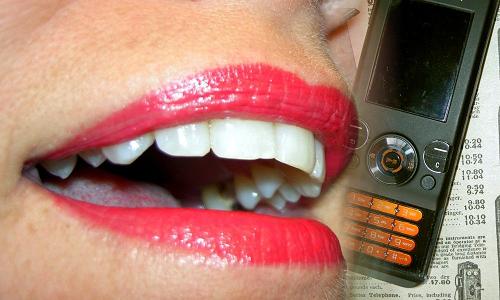Some people may disagree with what I am about to say here: online social networks bring people closer to each other. At least that is the personal impact that they have had on me. But what does this mean for marketing? One answer is that word-of-mouth between consumers is carrying more weight in how we choose and consume products. Whether we love or hate a product, now it is so easy to make it known to the public that we are essentially affecting the opinions of other consumers (from total strangers to close friends) every day.
Managers are often hesitant to invest in encouraging word-of-mouth, however, as its effects are notoriously difficult to measure. This is because word-of-mouth behavior is often unobserved, and it is difficult to tease out the concurrent impact of traditional marketing. These are the exact problems a recent article by Michael Trusov and colleagues in Journal of Marketing tried to tackle. Entitled “Effects of Word-of-Mouth Versus Traditional Marketing: Findings from
an Internet Social Networking Site”, this article offers a clear answer to the relative effectiveness of word-of-mouth vs. traditional PR and marketing.
What did they look at?
The impact of word-of-mouth, event marketing, and media appearance on the sign-ups for an undisclosed online social network.
Some intuitive findings:
More new sign-ups resulted in more word-of-mouth; event marketing led to more media appearance, and vice versa; word-of-mouth was not affected by previous event marketing or media appearance, however, suggesting consumers’ relatively independent opinions and actions.
Some not-so-intuitive and very important findings:
The 3-day elasticity of sign-ups with respect to word-of-mouth was .17. In layman’s terms, this means that doubling the amount of word-of-mouth increases sign-ups by 17%. The corresponding impact from event marketing and media appearance, in contrast, was only 1.7% and 2.2%. The gap became even bigger with regard to long-term effects. In the long run, the effect of word-of-mouth is 20 times that of event marketing and 30 times that of media appearance. While doubling event marketing or media exposure led to 1.7% and 2.6% respective increase in sign-ups in the long run, doubling word-of-mouth increases sign-ups by a full 53%. Financially, an outbound word-of-mouth referral translates into 75 cents/year increase in advertising revenue.
What does this mean for marketing practice?
Word-of-mouth is a powerful tool for customer acquisition. With the help of more powerful tracking tools provided by social networks and websites, it is possible for managers to measure the return from word-of-mouth activities. The mathematical approach used in this article (vector autoregressive modeling) further helps tease out the impact of other marketing and PR activities so that the true effect of word-of-mouth can be accurately measured. Together, this should reduce the hesitation to incorporate word-of-mouth into a company’s overall marketing strategy. The findings from this article also provide a strong motivation to better utilize word-of-mouth channel of communication.
Cautions
Readers should be cautioned from taking the results from the above research too literally. Two things should especially be taken into consideration. First, the data came from an online social network. Customers on such websites are usually highly motivated to invite their friends, and those invited by their friends are also very likely to sign up. If we were to change the context to, say, online banking, both the level of referral and the impact of referral are likely to be lower. Second, the word-of-mouth activities studied in this article are all organic referrals initiated by consumers themselves. If the word-of-mouth had been stimulated by the company (say, with financial incentives), the referrals may not have been considered as genuine to other consumers and therefore may not have created as strong of an effect as reported in this study. Although these are real limitations, the findings from this study are still quite powerful indicators of word-of-mouth effect. It is a tool managers should not ignore.
Reference
Michael Trusov, Randolph E. Bucklin, and Koen Pauwels (2009), “Effects of Word-of-Mouth Versus Traditional Marketing: Findings from an Internet Social Networking Site,” Journal of Marketing, Vol. 73 (September), p.90-102.

